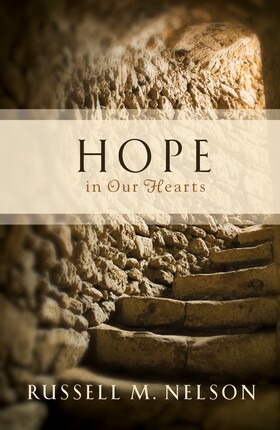Years ago when Sister Nelson and I had several teenage daughters, we took our family on a vacation far away from telephones and boyfriends. We went on a raft trip down the Colorado River through the Grand Canyon. As we started our journey, we had no idea how dangerous this trip could be.
The first day was beautiful. But on the second day, when we approached Horn Creek Rapids and saw a precipitous drop ahead, I was terrified. Floating on a rubber raft, our precious family was about to plunge over a waterfall! Instinctively I put one arm around my wife and the other around our youngest daughter. To protect them, I tried to hold them close to me. But as we reached the precipice, the bended raft became a giant sling and shot me into the air. I landed into the roiling rapids of the river. I had a hard time coming up. Each time I tried to find air, I hit the underside of the raft. My family couldn’t see me, but I could hear them shouting, “Daddy! Where’s Daddy?”
I finally found the side of the raft and rose to the surface. The family pulled my nearly drowned body out of the water. We were thankful to be safely reunited.
The next several days were pleasant and delightful. Then came the last day, when we were to go over Lava Falls, known as the most dangerous drop of the journey. When I saw what was ahead, I immediately asked to beach the raft and hold an emergency family council, knowing that if we were to survive this experience, we needed to plan carefully. I reasoned with our family: “No matter what happens, the rubber raft will remain on top of the water. If we cling with all our might to ropes secured to the raft, we can make it. Even if the raft should capsize, we will be all right if we hang tightly to the ropes.”
I turned to our little seven-year-old daughter and said, “All of the others will cling to a rope. But you will need to hold on to your daddy. Sit behind me. Put your arms around me, and hold me tightly while I hold the rope.”
That we did. We crossed those steep, rough rapids—hanging on for dear life—and all of us made it safely.1
The Lesson
Brothers and sisters, I nearly lost my life learning a lesson that I now give to you. As we go through life, even through very rough waters, a father’s instinctive impulse to cling tightly to his wife and to his children may not be the best way to accomplish his objective. Instead, if he will lovingly cling to the Savior and the iron rod of the gospel, his family will want to cling to him and to the Savior.
This lesson is surely not limited to fathers. Regardless of gender, marital status, or age, individuals can choose to link themselves directly to the Savior, hold fast to the rod of His truth, and lead by the light of that truth. By so doing, they become examples of righteousness to whom others will want to cling.
^ See Russell M. Nelson and Rebecca M. Taylor, “Friend to Friend,” Friend, March 1997, 6–7.
Lead image from
Few people understand the human heart better than Elder Russell M. Nelson, who, prior to his call into the Quorum of the Twelve Apostles, was a pioneering cardiac surgeon. Today, as an Apostle, he understands our hearts in a new way — most particularly, he understands our need for hope in our hearts. As a special witness of Jesus Christ, he testifies powerfully of where that hope can be found.
In Hope in Our Hearts, Elder Nelson brings his remarkable grasp of the gospel and his unique medical training to bear in eighteen outstanding messages that focus on family and relationships, Church doctrine, and personal growth. The book includes such classic addresses as: “Nurturing Marriage,” “Jesus Christ — The Master Healer,” and “The Magnificence of Man,” as well as some talks that aren’t widely available, such as “The Family: The Hope for the Future of Nations,” a landmark message given at the World Congress on Families V. An introduction written especially for this book includes important experiences, lessons, and photographs from his life.



